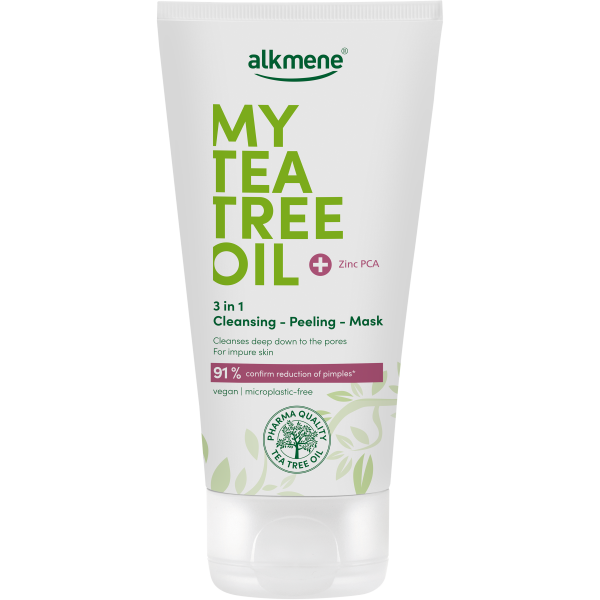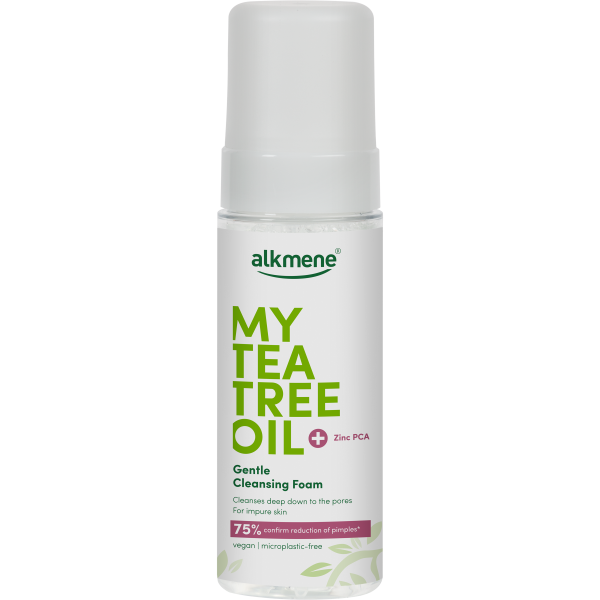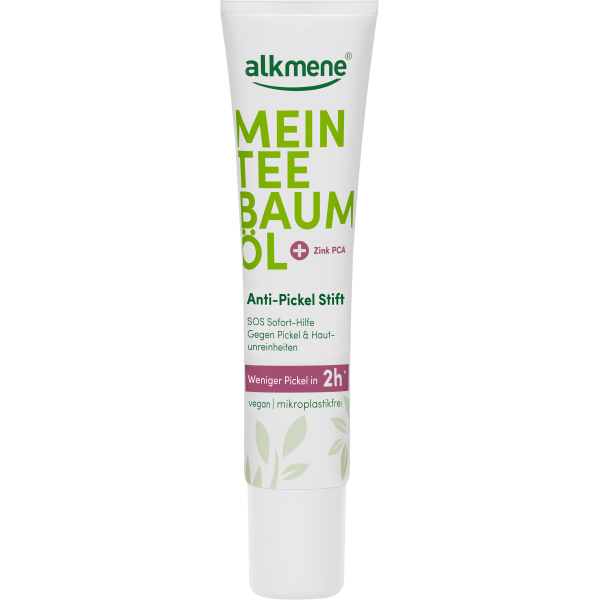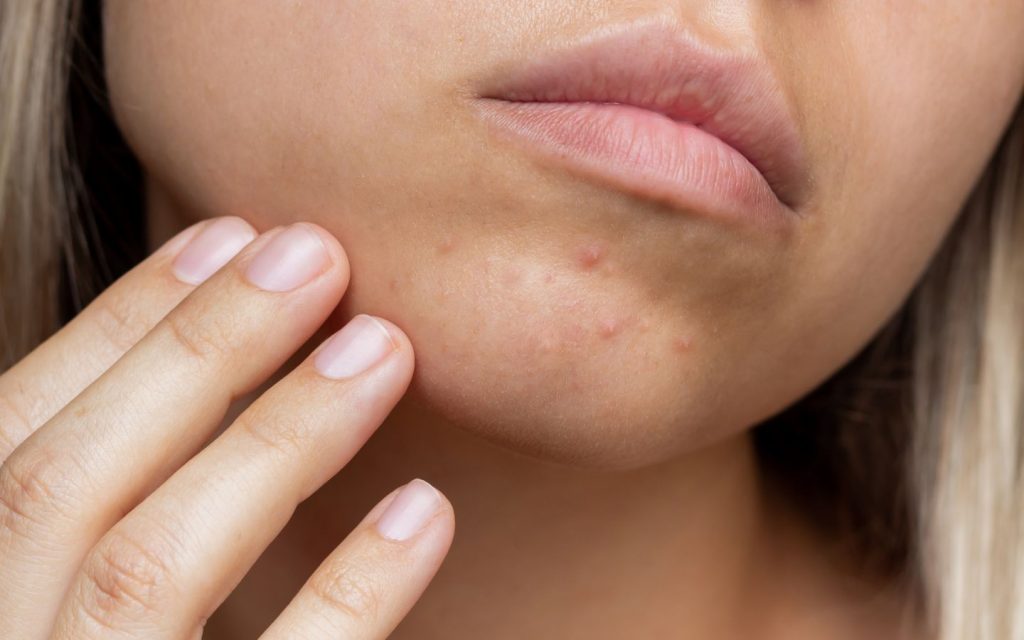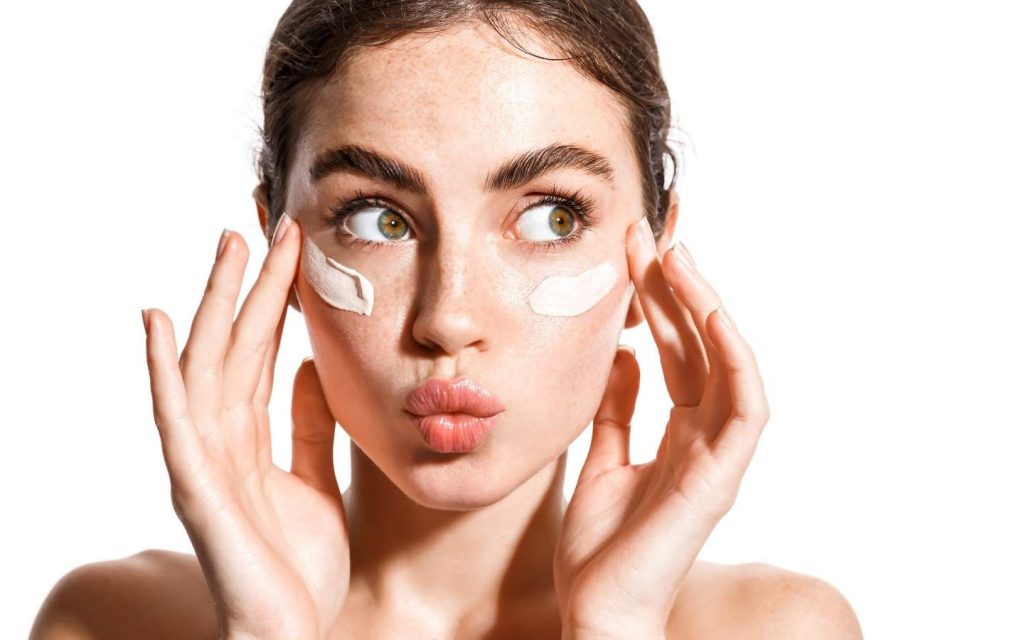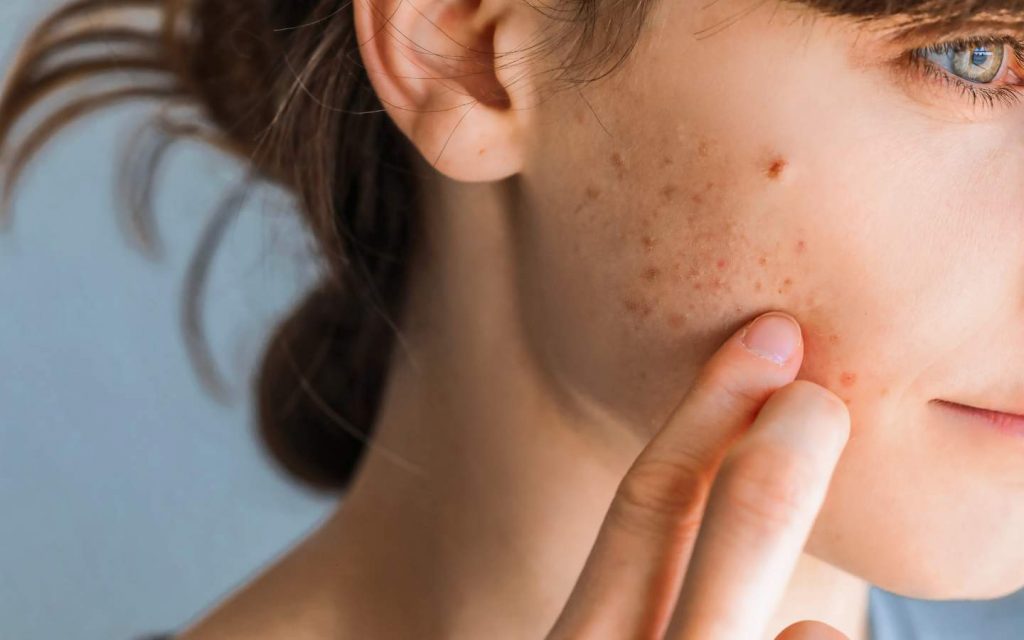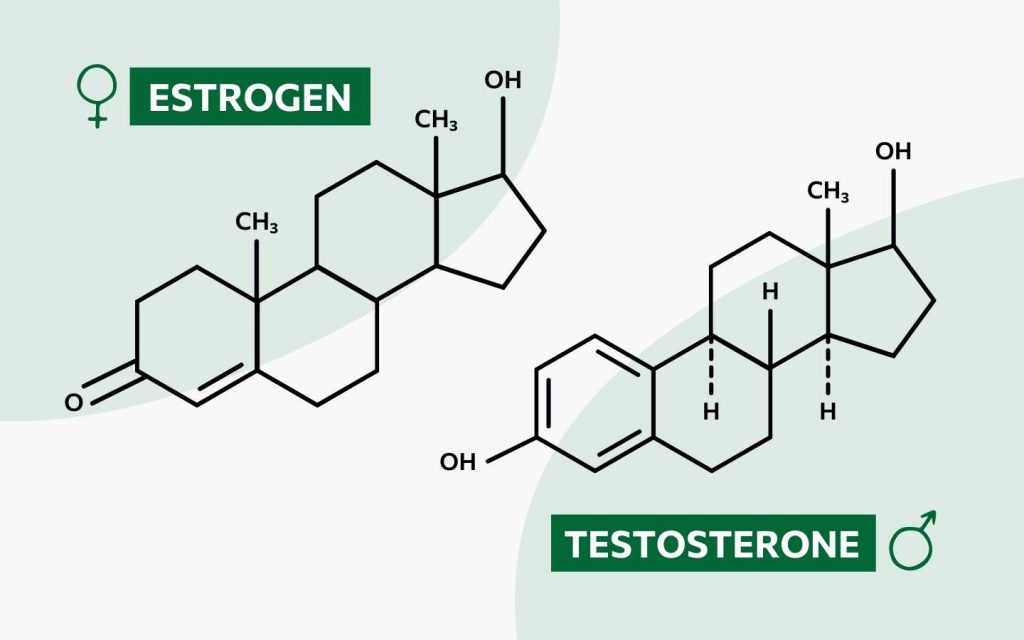


This article has been reviewed by:
Alexandra Beck
Kosmetikerin
Everyone knows the menopause, it is completely normal. However, there is much more to menopause than just the absence of menstruation and the resulting infertility. Due to the changes and strong fluctuations in the hormone balance, symptoms such as hot flashes, night sweats, sleep disorders, headaches, mood swings, pimples and impure or even dry skin can occur.
In this article we will further discuss the changes of the skin during menopause.
The course of menopause
Menopause, also known as the climacteric, is the period of several months or years during which a woman’s hormone balance changes completely. The production of the female sex hormones estrogen and progesterone in the ovaries decreases due to the decreasing number of eggs in the perimenopause until the hormone level is so low that menopause, i.e. the woman’s last period, occurs. So, in principle, women have a cycle until all the eggs are used up. Each girl has about 1,000,000 eggs at birth. At the first menstrual period, the number of eggs is already halved, which means that there are only 500,000 eggs left.
Perimenopause usually begins between the mid-30s and mid-40s and marks the start of menopause. The length of the phase is very individual, but for the most part it lasts from 4 to 10 years. At the beginning of perimenopause, there are still about 50,000 eggs available. As the number of eggs continues to decrease during perimenopause, the hormones estrogen and progesterone are also produced more and more irregularly by the ovaries. The hormone chaos causes your monthly cycle to shorten, your menstruation to stop completely for a few months, or your bleeding to become heavier. It is also responsible for you experiencing symptoms ranging from mood swings to hot flashes. The intensity and duration of these symptoms varies greatly and depends on many factors, such as the level of the hormone in question.
Menopause is the day of the last menstrual period, now all eggs are used up. It is only retroactively called menopause when a woman has no period for 12 consecutive months. The average age for menopause is 52.
The period after menopause is called postmenopause, and it lasts for the rest of your life. 12 months after menopause, the hormones estrogen and progesterone settle at a constant low level.
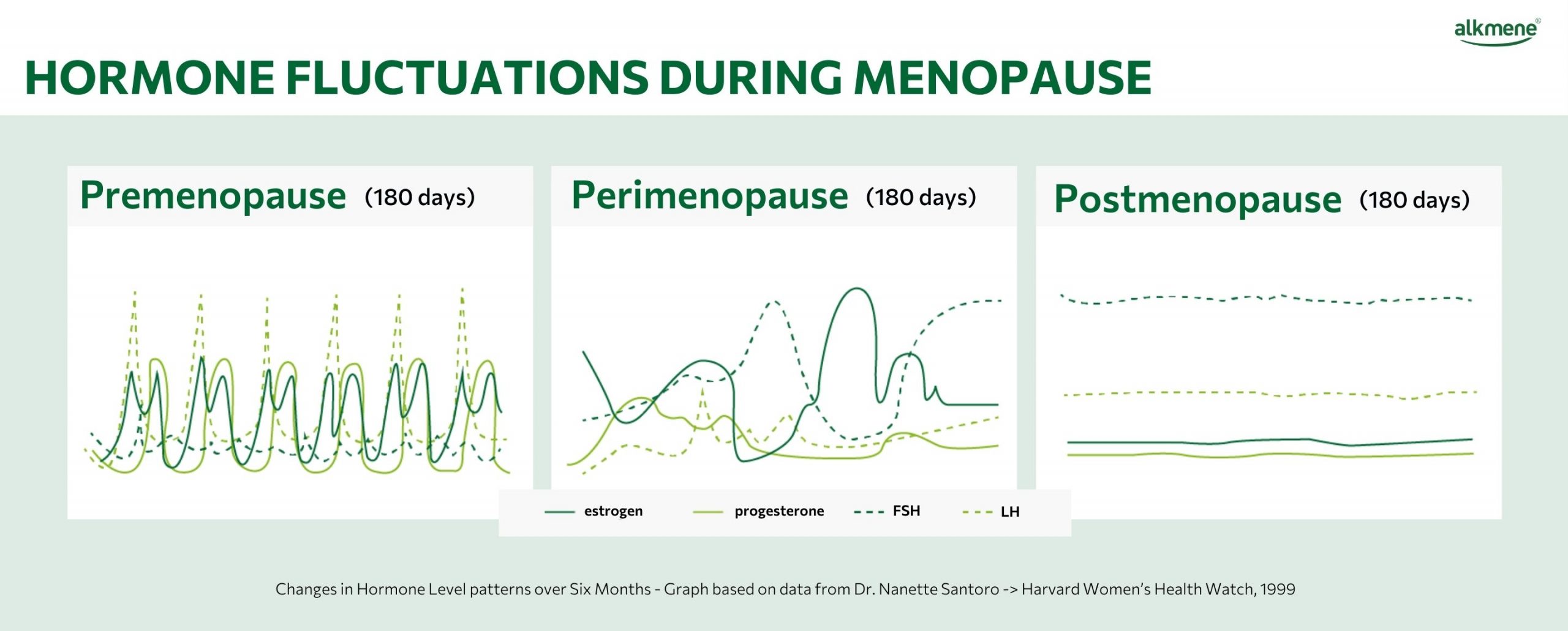
What happens to the skin during menopause?
Your hormone level in perimenopause fluctuates a lot. The estrogen level is sometimes very high and sometimes very low. The same applies to progesterone. The ups and downs of hormones can cause skin irritations and change the needs of your skin. You may suddenly find that you can no longer tolerate products that have always been good for you and your skin.
About a year after your last menstruation, in postmenopause, your hormones settle at a certain level, your estrogen and progesterone levels have now permanently decreased. Due to the lack of estrogen, your skin becomes thinner, drier, more sensitive to light, and more prone to breakouts.
Thinner skin and skin prone to wrinkles.
Estrogens are mainly involved in the formation of collagens. Collagens are fibrous proteins that keep the skin firm and smooth. Collagen can store water very well and thus cushions the skin from the inside. Young skin is made up of about 80 percent collagen. In the first five years after the last menstruation, about 30 percent of the collagen breaks down. The thickness of the skin therefore decreases by about 1% every year after menopause. Due to the lower collagen content of the skin, the skin becomes flabbier and wrinkles more visible.
Drier and more sensitive skin
As the skin has become thinner, it also becomes more sensitive and more easily injured. The sebaceous glands produce less sebum and the lack of collagen means that moisture cannot be stored as well, so the skin tends to become dry.
Pimples and blemished skin
As estrogen production slowly decreases, but the production of the male hormone remains at the same level as before menopause, an excess of testosterone develops. This imbalance then causes skin blemishes and pimples.
If you want to learn more about the connection between testosterone and estrogens in the development of blemished skin and acne read this article.
Skin care during menopause
You should definitely adapt your skin care to the changing needs of your skin. Care products should provide your skin with plenty of moisture and not irritate it even more. It is best to apply cream to your face in the morning, in the evening and after showering. Products with substances such as hyaluronic acid and are ideal here, as they help the skin to store more moisture. You should avoid alcohol, perfume and preservatives in your facial care products. They could irritate and dry out your already sensitive skin. For blemished skin and pimples, it is very important to have a skin care routine that is tailored to your skin. Products with zinc and tea tree oil are particularly effective against blemishes.
A care routine could look like this:
- Cleansing with a cleansing foam or wash gel
- Use of a face mask
- Dabbing on facial toner
- Applying a face cream
Since the production of the pigment melanin, which also protects against sunburns, decreases during menopause, your skin’s sensitivity to light increases. Therefore, you should avoid extensive sunbathing and solarium visits and always use a cream with a high sun protection factor.
In order to support your skin from the inside, you should make sure you drink enough fluids and eat a balanced diet (more information on the topic of nutrition for blemished skin can be found here). You should also avoid additional stress, as this can further promote skin impurities. You can find more tips on skin care here.
![]()

